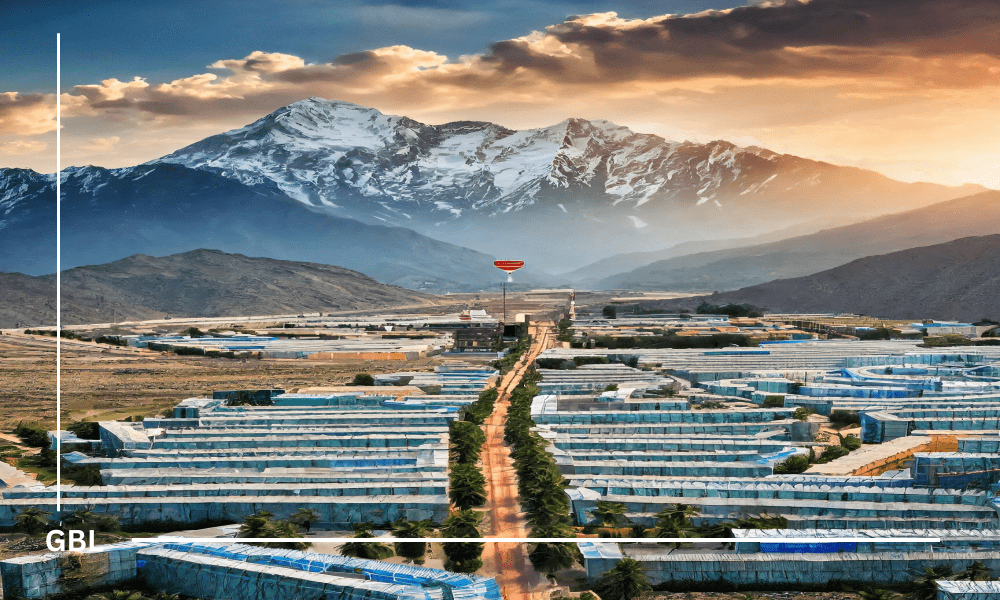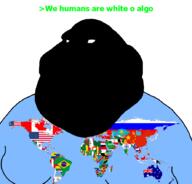Navigating Tariff Turbulence: ABI Research's Insights Into The Tech Sector's Trade War Experience

Table of Contents
The Impact of Tariffs on Tech Hardware Manufacturing
The hardware manufacturing segment has been particularly vulnerable to tariff turbulence. The intricate global supply chains supporting the production of smartphones, laptops, and other electronics have been severely disrupted. Key challenges include:
-
Increased cost of imported components: Tariffs on imported components, such as microchips, displays, and memory, have directly increased the cost of manufacturing finished products. This leads to higher end-product prices, impacting consumer affordability and potentially reducing market demand. ABI Research data shows a significant correlation between tariff increases and price hikes in several key tech hardware segments.
-
Shifting manufacturing bases: To mitigate the impact of tariffs, many companies have begun shifting manufacturing bases away from China to regions like Vietnam, India, and Mexico—a process known as nearshoring and reshoring. This involves significant logistical challenges, including establishing new manufacturing facilities, training local workforces, and navigating different regulatory environments.
-
Supply chain disruptions and increased lead times: The relocation of manufacturing facilities has inevitably disrupted established supply chains, leading to extended lead times and increased uncertainty in production schedules. This makes it difficult for companies to accurately forecast demand and manage inventory levels effectively.
-
Demand forecasting difficulties and inventory management: The unpredictability surrounding trade policy further complicates the already challenging task of forecasting demand and managing inventory. Companies must now account for potential tariff changes when making production decisions, adding a layer of complexity to their operations.
-
Exploring alternative component suppliers: Many tech companies are diversifying their sourcing strategies to reduce dependence on single suppliers located in tariff-affected regions. This helps mitigate the risk of supply chain disruptions but can also add to costs in the short term. ABI Research studies indicate a significant rise in the number of companies exploring dual-sourcing and multi-sourcing strategies.
Navigating Tariff Barriers for Software and Services
While the impact of tariffs on software and services is less direct than on hardware, the sector is not immune to the effects of trade wars. Challenges include:
-
Impact of digital services taxes: The increasing implementation of digital services taxes (DSTs) across various jurisdictions significantly impacts the revenue and profitability of software and service providers. These taxes add an extra layer of complexity to international business operations and can reduce the competitiveness of tech firms.
-
Protecting intellectual property rights: Protecting intellectual property rights across international borders becomes increasingly complex in a climate of trade tension. The enforcement of intellectual property rights can be challenging, especially in regions with less robust legal frameworks.
-
Navigating varying data privacy regulations: The global landscape of data privacy regulations adds to the challenges faced by software and service providers. Compliance with different regulations in various countries can be costly and time-consuming.
-
Adapting business models: Software and service companies are adapting their business models to mitigate the indirect impacts of tariffs. This includes focusing on services that are less reliant on physical goods and exploring new market segments less affected by trade tensions.
-
The role of international trade agreements: International trade agreements play a significant role in shaping the landscape for software and service providers. The absence of comprehensive global agreements governing digital trade exacerbates the challenges faced by these companies.
Strategic Responses: Tech Companies' Adaptations to Tariff Turbulence
Faced with tariff turbulence, tech companies have adopted a range of strategic responses aimed at mitigating risks and maintaining competitiveness. These include:
-
Supply chain diversification: Diversifying supply chains is a cornerstone of modern risk management. Companies are actively seeking alternative sourcing locations and suppliers to reduce reliance on specific regions or single sources.
-
Investment in automation and robotics: Automation and robotics are being leveraged to enhance manufacturing efficiency and reduce reliance on human labor in affected regions. This helps improve productivity and control costs.
-
Strengthening government relations and lobbying efforts: Companies are increasingly engaging in lobbying efforts to influence trade policies and advocate for their interests. Building strong relationships with governments is crucial in navigating the complexities of international trade regulations.
-
Utilizing strategic partnerships: Strategic partnerships allow companies to share risks and resources, mitigating the impact of tariff increases or supply chain disruptions. Collaboration helps spread the burden of adapting to the changing trade environment.
-
Exploring new business models: Some companies are exploring new business models that reduce their dependence on imports or shift their focus to less affected markets. This includes a greater emphasis on localized production and services.
The Long-Term Outlook: Implications for the Future of Global Tech Trade
The long-term implications of tariff turbulence for global tech trade are profound and multifaceted:
-
Increased regionalization of tech markets: We may see an increase in the regionalization of tech markets as companies prioritize localized production and sourcing to reduce reliance on global supply chains.
-
Growing focus on technological independence: Governments and companies alike are placing a greater emphasis on technological independence and self-reliance to reduce vulnerability to geopolitical risks and trade disruptions.
-
The role of trade negotiations: The outcome of ongoing and future trade negotiations will significantly shape future trade policies and their impact on the tech sector. The success of these negotiations will significantly affect the global tech landscape.
-
Long-term impact on innovation and competitiveness: Persistent trade uncertainty and escalating protectionist measures could stifle innovation and reduce competitiveness within the tech sector in the long run.
-
Increased geopolitical risks: The increasing role of geopolitical factors in shaping global trade flows presents significant risks for the tech sector, requiring greater vigilance and strategic planning.
Conclusion
The tech sector’s experience navigating tariff turbulence underscores the need for agility, strategic foresight, and proactive adaptation in the face of global trade uncertainties. ABI Research’s analysis emphasizes the importance of diversified supply chains, robust risk mitigation strategies, and strong government relations in mitigating the negative consequences of trade wars. Understanding the complexities of tariff turbulence and its impact on the tech sector is crucial for navigating the current and future landscape. Download ABI Research's latest reports to gain deeper insights and equip yourself with the knowledge needed to effectively manage risks and capitalize on opportunities in this dynamic environment. Learn how to successfully navigate trade war challenges and build a resilient global tech strategy.

Featured Posts
-
 Analysis Of Espns New Nba Draft Lottery Broadcast
May 13, 2025
Analysis Of Espns New Nba Draft Lottery Broadcast
May 13, 2025 -
 Analyzing Gibraltar Industries Rock Q Quarter Earnings A Deep Dive
May 13, 2025
Analyzing Gibraltar Industries Rock Q Quarter Earnings A Deep Dive
May 13, 2025 -
 Life Cycle Education The Role Of Campus Farm Animals In Student Learning
May 13, 2025
Life Cycle Education The Role Of Campus Farm Animals In Student Learning
May 13, 2025 -
 The Ultimate Guide To Doom The Dark Ages
May 13, 2025
The Ultimate Guide To Doom The Dark Ages
May 13, 2025 -
 Eva Longorias 50th Birthday Bash Miami Celebration With Gabrielle Union Becky G And More
May 13, 2025
Eva Longorias 50th Birthday Bash Miami Celebration With Gabrielle Union Becky G And More
May 13, 2025
Latest Posts
-
 Benin Seychelles Croatia Slovakia And Cambodia Welcome Byd Electric Vehicle Expansion
May 13, 2025
Benin Seychelles Croatia Slovakia And Cambodia Welcome Byd Electric Vehicle Expansion
May 13, 2025 -
 How To Make Spring Break Better For Kids Fun Activities And Tips
May 13, 2025
How To Make Spring Break Better For Kids Fun Activities And Tips
May 13, 2025 -
 Leadership Change At Four Walls New Ceo Appointed
May 13, 2025
Leadership Change At Four Walls New Ceo Appointed
May 13, 2025 -
 Byd Plans For Global Domination 2030 International Sales Projections
May 13, 2025
Byd Plans For Global Domination 2030 International Sales Projections
May 13, 2025 -
 L Allemagne Renforce Sa Protection Civile Un Besoin Urgent Apres Des Annees De Negligence
May 13, 2025
L Allemagne Renforce Sa Protection Civile Un Besoin Urgent Apres Des Annees De Negligence
May 13, 2025
